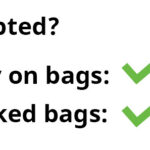Can You Fly With Spray Deodorant? Yes, you can bring spray deodorant on a plane, but there are important regulations to consider to ensure a smooth journey. At flyermedia.net, we provide you with essential information about air travel and aviation, including the rules for carrying personal hygiene items like deodorant. Learn about the specific TSA guidelines, size restrictions, and alternative options for staying fresh during your flight, and discover all you need for air travel guidance and aviation insights. For more detailed information on aviation regulations and travel tips, visit flyermedia.net and explore our comprehensive resources, expanding your knowledge with aviation insights and travel convenience tips.
1. Can I Bring My Own Deodorant and Antiperspirant on a Plane?
Yes, you can bring your own deodorant and antiperspirant on a plane, whether in carry-on or checked luggage. However, there are some important regulations you need to be aware of. If you’re carrying it in your carry-on, the containers must be 3.4 ounces (100 milliliters) or smaller and fit in a clear, quart-sized bag, according to TSA guidelines. According to the FAA, these rules are in place to minimize potential risks associated with flammable or hazardous materials. For checked baggage, there aren’t any size restrictions on solid or non-aerosol deodorants and antiperspirants, but aerosol products must be under 18 oz. total and follow guidelines for hazardous materials. It’s best to check the ingredients to ensure compliance, and packing travel-sized versions can be a smart move for convenience. Remember, these regulations are in place to ensure the safety of all passengers and crew, as stated by the TSA. For further insights on airline policies, visit flyermedia.net.
2. Are There Any Restrictions for Bringing Deodorant onto a Plane?
Yes, there are restrictions for bringing deodorant onto a plane, primarily concerning the type and size of the container. According to the TSA’s 3-1-1 rule, any liquids or aerosols in your carry-on must be in containers that are no larger than 3.4 ounces (100 milliliters) and must fit into a single, quart-sized, clear plastic zip-top bag. Solid stick deodorants typically do not have size restrictions. You can always pack larger quantities of deodorant in your checked bag without worrying about the 3.4-ounce limit. If you’re unsure about specific products, it’s always a good idea to check the TSA website or contact your airline in advance to inquire about their specific deodorant-carrying policy. This will help ensure that you comply with all regulations and avoid any issues at security checkpoints. For more details on TSA regulations, visit flyermedia.net.
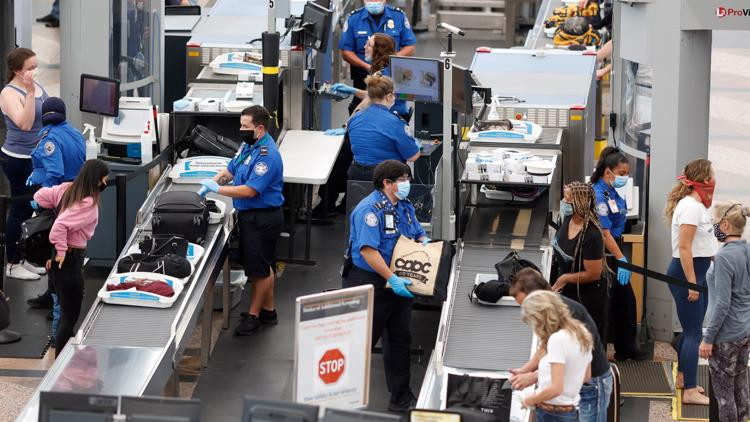 Restrictions on a flight
Restrictions on a flight
3. What Are the Different Types of Deodorant and Antiperspirant Allowed on Flights?
There are several types of deodorant and antiperspirant, each with slightly different rules regarding air travel. It’s important to know the distinctions to pack smartly.
3.1. Spray Deodorant
Spray deodorants are subject to liquid restrictions by the TSA. They must be in containers of 3.4 ounces (100 milliliters) or less and placed in a quart-sized, clear plastic bag for carry-on luggage. However, there are no restrictions for spray deodorants in checked baggage, according to TSA guidelines. Different airlines have different rules for aerosol sprays, so check before traveling. At flyermedia.net, you can find airline policies to ensure a hassle-free experience.
3.2. Roll-On Deodorant
Roll-on deodorants typically come in liquid or gel form, so the TSA applies the same restrictions as with spray deodorants. They must be in containers of 3.4 ounces (100 milliliters) or less and placed in a quart-sized, clear plastic bag for carry-on luggage. As long as they are within the size limit, you can bring them. Checking the TSA guidelines is always a smart idea. For stress-free travel advice, go to flyermedia.net.
3.3. Solid Stick Deodorant
Solid stick deodorants are your safest bet, as they are not considered liquids by the TSA. There are no restrictions on the size of solid stick deodorants you can bring in your carry-on or checked baggage, as stated by TSA regulations. They are convenient and won’t cause any issues at security checkpoints. Solid stick deodorants are a great option to ensure you stay fresh without regulatory problems. For travel tips that ease your journey, visit flyermedia.net.
3.4. Crystal Deodorant
Crystal deodorants, made from natural mineral salts, are also considered solids and are generally permitted in any size in your carry-on or checked baggage. The TSA does not regulate crystal deodorants like liquids or aerosols. These deodorants are a convenient, hassle-free option for staying fresh during your travels. For detailed packing guides, turn to flyermedia.net.
3.5. Cream Deodorant
Cream deodorants fall under the liquid/gel category, so they must adhere to the 3.4-ounce (100-milliliter) limit for carry-on luggage, as per TSA guidelines. If you wish to bring larger quantities, pack them in your checked baggage. Following these guidelines ensures a smoother security process. For expert advice on travel regulations, explore flyermedia.net.
3.6. Powder Deodorant
Powder deodorant is generally permitted in both carry-on and checked baggage. The TSA recommends that you don’t pack a powdered deodorant that is over 12 ounces (340 grams). According to the TSA, these restrictions ensure security and prevent any potential risks. For dependable travel information, visit flyermedia.net.
Understanding these distinctions helps you pack efficiently and in compliance with TSA regulations, making your airport experience smoother.
4. Is Deodorant Considered a Liquid?
Whether deodorant is considered a liquid depends on its form. Solid stick, crystal, and powder deodorants are not considered liquids, so they can be carried in any quantity in your carry-on or checked baggage. Spray, roll-on, and cream deodorants are treated as liquids, as defined by TSA guidelines. According to TSA regulations, liquids must be in containers of 3.4 ounces (100 milliliters) or less and placed in a quart-sized, clear plastic bag for carry-on luggage. Larger sizes can be packed in checked baggage. Knowing the type of deodorant you have will help you pack accordingly and avoid issues at security checkpoints. For clear travel guidelines, go to flyermedia.net.
5. Alternatives to Carry-On Deodorant
If you’re concerned about the restrictions on carry-on deodorants, there are several alternatives you can consider. Here’s how to keep fresh without the hassle:
5.1. Travel-Sized Solid Stick Deodorant
Consider packing a travel-sized solid stick deodorant. Solid stick deodorants are not subject to liquid restrictions, making them a convenient option for carry-on luggage, as stated by TSA regulations. They are readily available in most drugstores and supermarkets. According to the FAA, travel-sized items are designed to comply with airline regulations.
5.2. Deodorant Wipes
Deodorant wipes are a fantastic alternative that bypasses liquid restrictions altogether. These wipes are individually packaged and easy to carry, perfect for freshening up during your flight, as recommended by travel experts. The TSA does not regulate wipes in the same manner as liquids. They’re available at most drugstores and online retailers. For packing light and staying fresh, visit flyermedia.net.
5.3. Pre-planning and Purchasing at Your Destination
You can avoid packing deodorant altogether by purchasing it at your destination, either at a local drugstore or supermarket. This is particularly useful for longer trips or if you prefer to use larger sizes. Many travelers find this a convenient option. It saves space and adheres to the “travel light” philosophy. According to travel industry reports, pre-planning eliminates travel stress.
5.4. Buying After the Security Check
Another convenient option is to buy deodorant after you pass through the TSA security checkpoint at the airport. Many airport stores sell travel-sized toiletries, including deodorants that comply with carry-on regulations. This ensures you have what you need without any hassle at security. Airport retail data shows that these stores cater to travelers’ immediate needs. For stress-free travel tips, explore flyermedia.net.
5.5. Natural Alternatives
Explore natural deodorant alternatives such as crystal deodorants or those made from baking soda and essential oils. Crystal deodorants, made from mineral salts, are not subject to liquid restrictions. They’re easy to pack and effective. Natural products often appeal to health-conscious travelers. According to health and wellness experts, natural options are increasingly popular. For more travel and wellness information, go to flyermedia.net.
5.6. Body Powder
Consider using body powder as a deodorant alternative. Powder is not considered a liquid and is suitable for use during flights. It helps to absorb sweat and keep you fresh. According to beauty experts, powder is a versatile alternative. For information on personal care during travels, check out flyermedia.net.
These alternatives can help you stay fresh and comfortable during your travels without the stress of navigating liquid restrictions.
6. Why Is Deodorant a Security Risk?
While deodorant itself isn’t inherently a security risk, the form it takes (especially aerosols and liquids) and the potential for concealing prohibited items are the primary concerns. According to the TSA, these guidelines help prevent potential threats. Here’s a breakdown:
6.1. Potential Concealment
Aerosol cans or larger containers of liquid deodorant could potentially be used to conceal explosive substances or other prohibited items. Security officials worry about potential misuse. According to aviation security reports, concealment is a key concern.
6.2. Aerosol Pressurization
Aerosol cans are pressurized, and while modern cans are designed to be safe, there’s always a risk of leakage or explosion under certain conditions (e.g., extreme temperature changes). Airlines restrict aerosols for safety. According to engineering reports, pressure changes can affect containers.
6.3. Compliance with International Regulations
Following these guidelines ensures compliance with international aviation regulations. Standardizing rules makes security processes more efficient. International aviation authorities emphasize compliance for safety.
6.4. Preventing Liquid Explosives
In the past, there have been concerns about liquid explosives, which led to stricter regulations on liquids in carry-on baggage. The TSA aims to prevent any recurrence of such incidents. Aviation safety analyses highlight the need for vigilance.
6.5. Security Screening Efficiency
Standardized rules about liquids help streamline the security screening process. It’s easier for TSA agents to quickly assess compliance. Efficient screening reduces wait times for passengers. According to TSA efficiency reports, clear guidelines improve throughput.
To mitigate these concerns, the TSA has specific regulations for liquids and aerosols in carry-on luggage, limiting the size of containers and requiring them to be placed in a clear, quart-sized bag.
7. Things to Know Before Traveling with Deodorant
Before you head to the airport, here are essential things to know about traveling with deodorant to ensure a smooth experience:
7.1. TSA Regulations
Familiarize yourself with the TSA’s regulations on liquids and aerosols. The key is the 3-1-1 rule: liquids must be in containers of 3.4 ounces (100 milliliters) or less and placed in a quart-sized, clear plastic bag. Keeping up with regulations minimizes hassles at security checkpoints. According to the TSA, compliance with these rules streamlines the screening process.
7.2. Types of Deodorant
Understand the different types of deodorant and how they are treated by the TSA. Solid stick deodorants have no size restrictions, making them ideal for carry-ons. Knowing your product type simplifies packing. According to travel experts, solid deodorants are the most convenient option.
7.3. Checked Baggage
If you need to bring larger sizes of deodorant, pack them in your checked baggage. There are generally no size restrictions for non-aerosol deodorants in checked bags. Utilizing checked baggage avoids carry-on restrictions. Airline baggage guidelines recommend checking larger items.
7.4. Airline Policies
Check your airline’s specific policies regarding aerosols. Some airlines may have additional restrictions beyond TSA guidelines. Understanding airline policies prevents unpleasant surprises. Airline customer service can provide detailed information.
7.5. Doctor’s Note
If you have a medically necessary deodorant that exceeds the size limits, carry a doctor’s note. The TSA may make exceptions with proper documentation. Medical documentation can ease security concerns. According to medical travel advisors, a doctor’s note is essential in such cases.
7.6. Travel-Sized Products
Consider purchasing travel-sized deodorants that comply with TSA regulations. These are readily available and save space in your carry-on. Travel-sized items simplify packing. According to retail analysts, travel-sized products are increasingly popular.
7.7. Pre-planning and Purchasing at Your Destination
You can always purchase deodorant at your destination to avoid packing it altogether. This is a convenient option for longer trips. Local purchases eliminate packing hassles. Savvy travelers often buy toiletries upon arrival.
7.8. Buying After Security
Another option is to buy deodorant at airport stores after passing through security. This ensures compliance with carry-on rules. Airport shopping can be a convenient solution. Retail data shows airport stores cater to travel needs.
7.9. Security Screening
Be prepared for additional screening of your deodorant at security checkpoints. TSA agents may need to inspect the item. Preparedness streamlines security checks. According to TSA protocols, additional screening is sometimes necessary.
7.10. Environmental Considerations
Store deodorant away from heat and light to avoid it from going bad.
By keeping these points in mind, you can confidently pack your deodorant and breeze through airport security without any issues.
8. Roll-On Deodorant and Air Travel: What You Need to Know
Roll-on deodorants are a popular choice, but when it comes to air travel, there are specific considerations you need to keep in mind.
8.1. Liquid or Gel
Roll-on deodorants are typically classified as liquids or gels, which means they are subject to the TSA’s 3-1-1 rule. Being a liquid means restrictions apply. According to TSA guidelines, this classification is important.
8.2. Size Restrictions
To carry a roll-on deodorant in your carry-on luggage, the container must be 3.4 ounces (100 milliliters) or less. Compliance with size restrictions is essential. The TSA enforces these limits strictly.
8.3. Quart-Sized Bag
You must place the roll-on deodorant in a quart-sized, clear plastic zip-top bag along with your other liquids. Proper storage prevents security issues. The TSA requires a clear bag for easy inspection.
8.4. Checked Baggage
If your roll-on deodorant is larger than 3.4 ounces, pack it in your checked baggage. Checking larger items avoids carry-on hassles. Airline policies recommend this approach.
8.5. Leakage
Be aware that gel deodorants can expand at high altitudes, potentially leading to leakage. Proper sealing prevents messes. According to travel experts, altitude changes can affect liquids.
8.6. Clear Storage
Store the deodorant bottle in a clear, quart-sized baggy so that it doesn’t look like you’re trying to hide it from TSA staff.
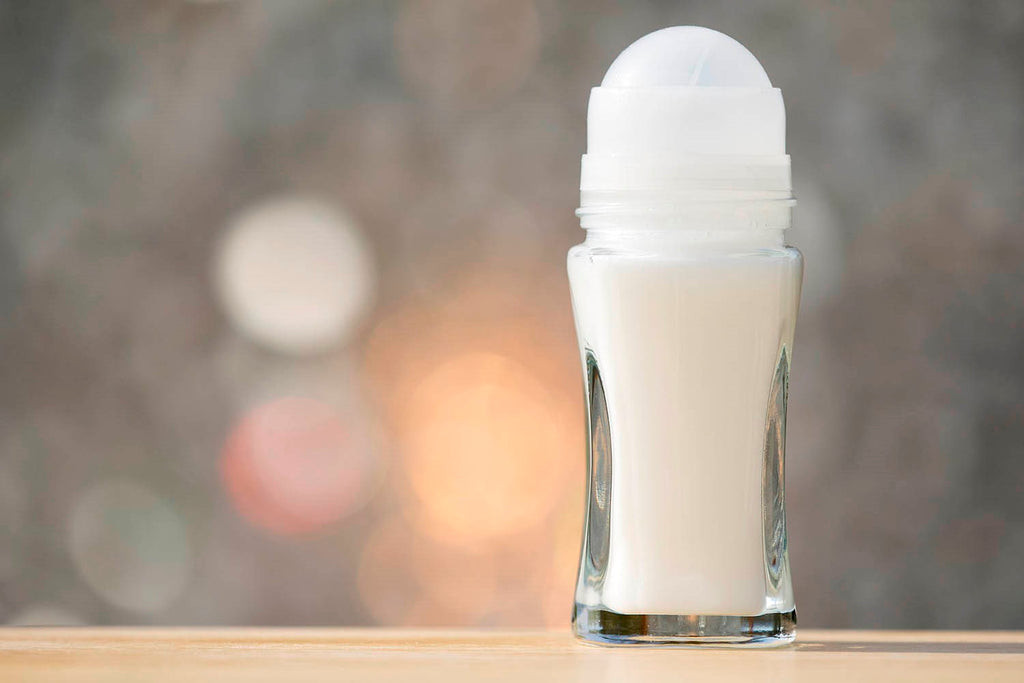 Roll-on deodorant
Roll-on deodorant
9. Solid Stick Deodorant: Your Easiest Option for Flying
Solid stick deodorants are often the easiest option for flying because they are not subject to the same restrictions as liquids and aerosols.
9.1. Not Considered a Liquid
Solid stick deodorants are not considered liquids by the TSA, meaning there are no size restrictions for carry-on or checked baggage. Not being a liquid simplifies packing. The TSA’s guidelines confirm this.
9.2. Convenient Packing
You can carry a solid deodorant of any size onto your flight without adhering to the 3.4 oz rule. Convenient packing saves time and stress. Travel experts recommend solid options.
9.3. No Special Storage
Solid stick deodorants do not need to be placed in a clear plastic bag. No special storage requirements ease packing. The TSA does not require this for solids.
9.4. Reduced Waste
Stick products are easier to control and cause less product waste during use. Waste reduction benefits travelers and the environment. Sustainable travel practices are increasingly valued.
9.5. Wide Availability
Solid stick deodorants are widely available in various brands and sizes. Accessibility makes them a popular choice. Retail data shows broad market availability.
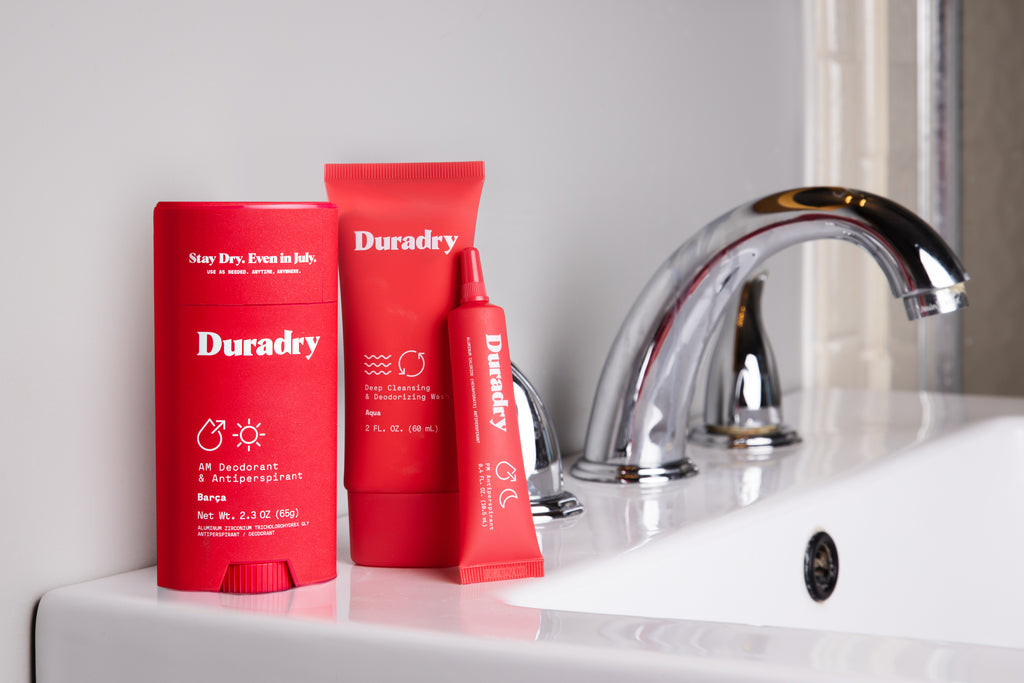 solid stick deodorant
solid stick deodorant
10. Aerosols and Sprays: Navigating the Rules for Air Travel
Aerosols and sprays, including deodorant sprays, have specific rules for air travel due to their pressurized nature.
10.1. Liquid Status
With Aerosols, it may seem like a gas that comes out the can but inside the pressurized container, it’s a liquid.
10.2. Size Restrictions
Aerosol containers must be 3.4 ounces (100 milliliters) or less to be allowed in carry-on luggage. Size limits are strictly enforced. The TSA enforces these limits for safety.
10.3. Quart-Sized Bag
Aerosol sprays must be placed in a quart-sized, clear plastic bag along with other liquids. Proper storage prevents security issues. The TSA requires a clear bag for easy inspection.
10.4. Checked Baggage
While prohibited from carry-ons, aerosols can be transported in checked baggage with certain conditions.
10.5. Airline Policies
When travelling, it is important to be aware of the airline’s aerosol and spray policies. Many airlines have banned these items completely, while others allow them but with specific conditions.
10.6. Pressurized Concerns
Aerosol sprays are pressurized, and while modern cans are designed to be safe, there’s always a risk of leakage or explosion under certain conditions (e.g., extreme temperature changes). Airlines restrict aerosols for safety. According to engineering reports, pressure changes can affect containers.
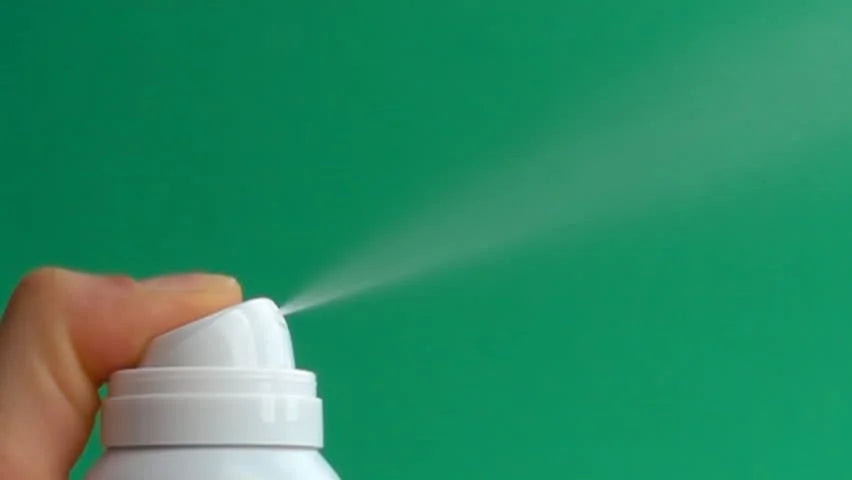 Aerosol and spray deodorant
Aerosol and spray deodorant
11. Powdered Deodorant: A Convenient Travel Option
Powdered deodorant offers a convenient alternative for travelers looking to avoid liquid restrictions.
11.1. Not Considered a Liquid
Since powdered deodorant is not considered a liquid by the TSA then there is no rule in place about bringing them onto planes, so you are allowed to carry powdered deodorants in carry-on baggage and checked baggage.
11.2. Size Recommendations
However, it may require screening while going through security in the airport and the TSA recommends that you don’t pack a powdered deodorant that is over 12 ounces.
11.3. Travel-Friendly
Powdered deodorant is easy to pack and use on the go, making it ideal for travel. Ease of use is a key advantage. Travelers appreciate its convenience.
11.4. Quick Absorption
Powdered deodorants quickly absorb moisture, helping to keep you fresh during your trip. Moisture absorption enhances comfort. According to personal care experts, this is a primary benefit.
11.5. Mess-Free
When applied correctly, powdered deodorants are generally mess-free compared to liquids and gels. Clean application reduces potential spills. Travelers value mess-free products.
12. Alternative Methods of Bringing Liquid Deodorants to Your Destination
If your specific brand of liquid deodorant is a must-have, there are alternative methods to ensure you can bring it to your destination.
12.1. Carry a Doctor’s Note
If your deodorant is prescribed, it’s legal for you to carry larger amounts than the standard 3.4 ounces.
When you head to the airport, make sure to keep a copy of your prescription or a valid doctor’s note on hand. If you’re stopped during the bag checking process, just proffer the note to show to a TSA official.
It’s recommended that you Mention that your deodorant is medically necessary, then take it out of your carry-on and in a separate bin.
If you don’t have a doctors note or want to check a bag you have other options to consider.
12.2. Buy Your Deodorant After The TSA Security Check
There are a few different ways to get around the TSA security check for deodorants. The most popular way is to buy your deodorant after the security checkpoint has been completed. You will be able to carry aerosol spray cans, travel-sized liquids, and gels in your carry-on bag without having them checked.
Make sure that you read all of the guidelines before traveling so that you know exactly what you are allowed to bring on board.
12.3. Buy a Travel Size Deodorant
Travel size hygiene products have become increasingly popular as TSA restrictions have grown more punitive. Just head down to your local grocery store to get TSA approved travel-sized antiperspirant.
These alternative methods allow you to bring your preferred deodorant while adhering to TSA regulations.
13. FAQ: Can You Fly with Spray Deodorant?
13.1. Can I bring a full-size deodorant stick in my carry-on?
Yes, you can bring a full-size deodorant stick in your carry-on. According to TSA guidelines, solid stick deodorants are not considered liquids and do not have size restrictions. This makes them a convenient and hassle-free option for staying fresh during your travels. For additional travel tips, check out flyermedia.net.
13.2. Are aerosol deodorants allowed on planes?
Yes, aerosol deodorants are allowed on planes, but they must comply with the TSA’s 3-1-1 rule for liquids. This means the container must be 3.4 ounces (100 milliliters) or smaller and placed in a quart-sized, clear plastic bag. Larger sizes can be packed in your checked baggage. Always ensure compliance with TSA guidelines for a smooth security process, as mentioned on flyermedia.net.
13.3. What happens if my deodorant is larger than 3.4 ounces?
If your deodorant is larger than 3.4 ounces, you must pack it in your checked baggage. The TSA restricts liquids in carry-ons to this size limit. Compliance ensures a smooth security screening. Find more travel advice at flyermedia.net.
13.4. Can I buy deodorant after going through airport security?
Yes, you can buy deodorant after going through airport security. Many airport stores sell travel-sized toiletries, including deodorants that comply with carry-on regulations. This is a convenient option for ensuring you have what you need without any hassle at security. For airport shopping tips, visit flyermedia.net.
13.5. Are there any restrictions on crystal deodorants?
No, there are generally no restrictions on crystal deodorants. Crystal deodorants are made from natural mineral salts and are considered solids, so they are permitted in any size in your carry-on or checked baggage. Enjoy hassle-free packing with this convenient option. For additional travel insights, visit flyermedia.net.
13.6. Will TSA inspect my deodorant at the security checkpoint?
Yes, TSA may inspect your deodorant at the security checkpoint, especially if it’s a liquid or aerosol. Be prepared to remove it from your bag for inspection. Cooperation ensures a smooth screening process. Get security tips at flyermedia.net.
13.7. Can I bring deodorant wipes in my carry-on?
Yes, you can bring deodorant wipes in your carry-on. Deodorant wipes are not subject to liquid restrictions, making them a convenient and hassle-free option for staying fresh during your flight. Enjoy the ease of travel with these wipes. Discover more travel essentials at flyermedia.net.
13.8. What if I have a doctor’s note for a larger deodorant?
If you have a doctor’s note for a larger deodorant, present it to the TSA officer at the security checkpoint. While a doctor’s note doesn’t guarantee exemption, it can help explain the necessity of carrying a larger quantity of medically required items. For medically related travel advice, see flyermedia.net.
13.9. Are gel deodorants allowed in carry-ons?
Yes, gel deodorants are allowed in carry-ons, but they must comply with the TSA’s 3-1-1 rule for liquids. This means the container must be 3.4 ounces (100 milliliters) or smaller and placed in a quart-sized, clear plastic bag. Adhering to TSA guidelines ensures compliance. For travel tips, check flyermedia.net.
13.10. Can I pack deodorant in my personal item?
Yes, you can pack deodorant in your personal item, whether it’s a solid stick, aerosol, or liquid, as long as you comply with TSA regulations. Ensure liquids and aerosols are in containers of 3.4 ounces (100 milliliters) or less and placed in a quart-sized bag for carry-ons. Pack smart for a smooth journey. Learn more travel packing tips at flyermedia.net.
Understanding these regulations and guidelines ensures you can travel with your preferred deodorant hassle-free.
At flyermedia.net, we understand the importance of being well-informed when it comes to air travel, especially if you are pursuing a career in aviation. Whether you’re a student pilot at Embry-Riddle Aeronautical University, a seasoned pilot, or an aviation enthusiast, having the latest information about TSA regulations, flight training, and career opportunities is crucial.
We provide a wide range of resources, including information on flight schools near Daytona Beach, insights into the aviation industry, and updates on FAA regulations. Our goal is to be your go-to source for all things aviation, making your journey through the world of flight as smooth and informed as possible.
If you are looking for a flight school, trying to keep up with aviation news, or seeking guidance on FAA regulations, flyermedia.net is here to help.
Ready to take off? Explore flyermedia.net today for the latest in aviation news, flight training, and career opportunities in the USA.
Address: 600 S Clyde Morris Blvd, Daytona Beach, FL 32114, United States
Phone: +1 (386) 226-6000
Website: flyermedia.net
